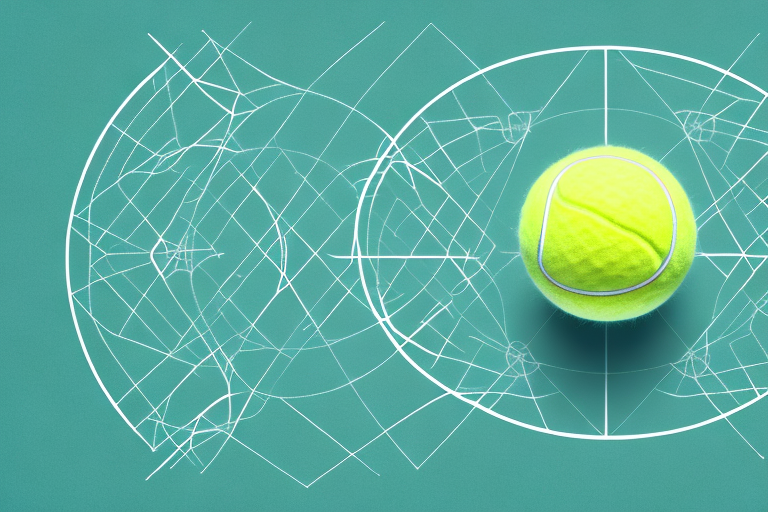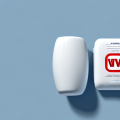Neck pain is a common condition that affects millions of people worldwide. It can be due to a variety of causes, including poor posture, muscle strain, injury, or underlying medical conditions. Whatever the reason for neck pain, it can significantly impact your quality of life, making it challenging to perform everyday tasks and enjoy your favorite activities. If you’re looking for a safe and effective alternative to medication or surgery, tennis ball therapy may be worth exploring. In this article, we’ll explore how tennis ball trigger points can help alleviate neck pain and how to use them safely and effectively for maximum benefit.
Understanding Neck Trigger Points
Trigger points refer to areas of tension and inflammation in the muscles and connective tissues of the body. When these points are stimulated or irritated, it can cause pain, discomfort, and limited range of motion. Trigger points can be felt as small, hard knots or lumps on the surface of the skin, and they can develop anywhere in the body, including the neck.
Neck trigger points can be caused by a variety of factors, including poor posture, stress, overuse of muscles, and injury. Common symptoms of neck trigger points include headaches, neck pain, shoulder pain, and difficulty turning the head. Treatment options for neck trigger points include massage therapy, stretching exercises, and physical therapy. It is important to address trigger points promptly to prevent them from worsening and causing further discomfort.
How Tennis Ball Therapy Works
Tennis ball therapy is an effective and non-invasive technique for relieving neck pain. The tennis ball acts as a trigger point massage tool, helping to stimulate blood flow to the affected area, relax muscles, and reduce inflammation. The pressure from the tennis ball also helps to release and reduce tension in the muscles, resulting in an overall improvement in mobility and comfort. Tennis ball therapy is simple, affordable, and easy to perform, making it an excellent option for those looking for a home remedy for neck pain.
In addition to its benefits for neck pain, tennis ball therapy can also be used to alleviate discomfort in other areas of the body, such as the back, hips, and feet. By targeting specific trigger points, tennis ball therapy can help to relieve muscle tension and improve circulation throughout the body. It can also be a useful tool for athletes looking to improve their flexibility and range of motion, as well as for individuals with chronic pain conditions who are seeking a non-pharmaceutical approach to pain management.
Benefits of Using Tennis Ball for Pain Relief
The benefits of using a tennis ball for pain relief are numerous and vary from person to person. Some of the most common benefits include improved blood flow, reduced inflammation, decreased muscle tension, improved range of motion, and reduced pain and discomfort. Using a tennis ball for pain relief is also a safe and affordable alternative to medication or surgery, making it accessible to those who may not have other treatment options available to them.
In addition to the above benefits, using a tennis ball for pain relief can also help to release trigger points in the body. Trigger points are areas of muscle that are tight and painful, and can cause referred pain in other areas of the body. By applying pressure to these trigger points with a tennis ball, you can help to release the tension and alleviate the pain. This technique is commonly used in self-myofascial release, a form of self-massage that can be done at home with minimal equipment.
Techniques for Using Tennis Ball on Neck Trigger Points
To use a tennis ball for neck pain relief, start by warming up the affected area with gentle stretches and massage. Once the muscles are warmed up, place the tennis ball on a flat surface and lie on it, positioning it directly beneath the affected area. Apply gentle pressure to the tennis ball, using your body weight to control the amount of pressure applied. You can also roll the tennis ball around, applying pressure to different areas of the neck and upper back, for a more targeted approach. If you experience any pain or discomfort during the exercise, stop immediately and consult a healthcare professional.
It is important to note that using a tennis ball on trigger points in the neck should not be the only form of treatment for neck pain. It should be used in conjunction with other forms of therapy, such as physical therapy or chiropractic care. Additionally, it is important to use a tennis ball that is the appropriate size and firmness for your body, as using a ball that is too hard or too soft can cause further discomfort. Always listen to your body and adjust the pressure and duration of the exercise accordingly.
Precautions and Safety Measures to Follow
While tennis ball therapy is generally safe and well-tolerated, there are some precautions and safety measures you should follow to avoid injury or aggravating your symptoms. Always warm up the affected area before using a tennis ball, and start with gentle pressure before gradually increasing the intensity. Also, avoid placing the tennis ball directly on any bony areas, as this can cause pain and discomfort. And finally, be sure to drink plenty of water and rest after each session to aid in recovery and reduce the risk of injury.
It is important to note that tennis ball therapy should not be used as a substitute for medical treatment. If you are experiencing severe or persistent pain, it is recommended that you consult with a healthcare professional before attempting any self-treatment. Additionally, if you have any pre-existing medical conditions or injuries, it is important to speak with your doctor before using tennis ball therapy to ensure that it is safe for you to do so.
Common Types of Neck Pain that Can Be Relieved with Tennis Ball Therapy
There are several types of neck pain that can be effectively treated with tennis ball therapy, including tension headaches, pinched nerves, muscle strain, and whiplash. Tennis ball therapy is also useful for those experiencing chronic neck pain associated with conditions such as osteoarthritis, fibromyalgia, and cervical spondylosis.
Tips for Incorporating Tennis Ball Therapy into Your Daily Routine
To get the most out of tennis ball therapy, it’s essential to make it a part of your daily routine. Start by scheduling in a few minutes each day to perform the exercises, and gradually increase the duration and frequency as your symptoms improve. You can also add a few drops of essential oils to the tennis ball to enhance the therapeutic benefits and create a more relaxing environment.
Professional Help and Support Available for Severe Neck Pain
If you suffer from severe or chronic neck pain, it’s essential to consult with a healthcare professional to determine the underlying cause of your symptoms and develop a comprehensive treatment plan. In some cases, medication, physical therapy, or even surgery may be necessary to manage your pain effectively. Always follow the guidance of your healthcare provider and seek emergency medical attention if you experience sudden or severe neck pain, numbness, or tingling.
Success Stories and Testimonials from People who Have Tried Tennis Ball Therapy
Tennis ball therapy has helped many people find relief from neck pain and other muscular discomforts. Countless success stories and testimonials can attest to the efficacy of this therapeutic technique. People who have tried tennis ball therapy report significant improvement in pain, increased range of motion, and reduced muscle tension, among other benefits. If you’re looking for a natural and effective way to manage your neck pain, tennis ball therapy may be worth a try.





